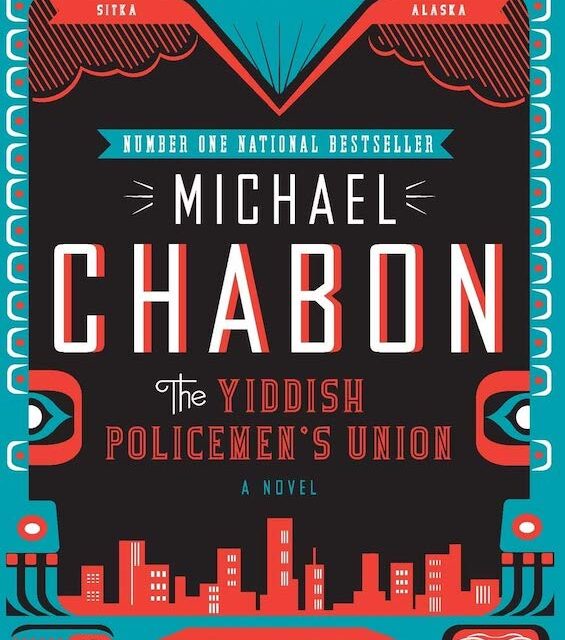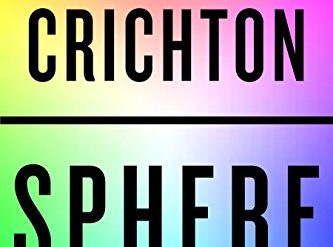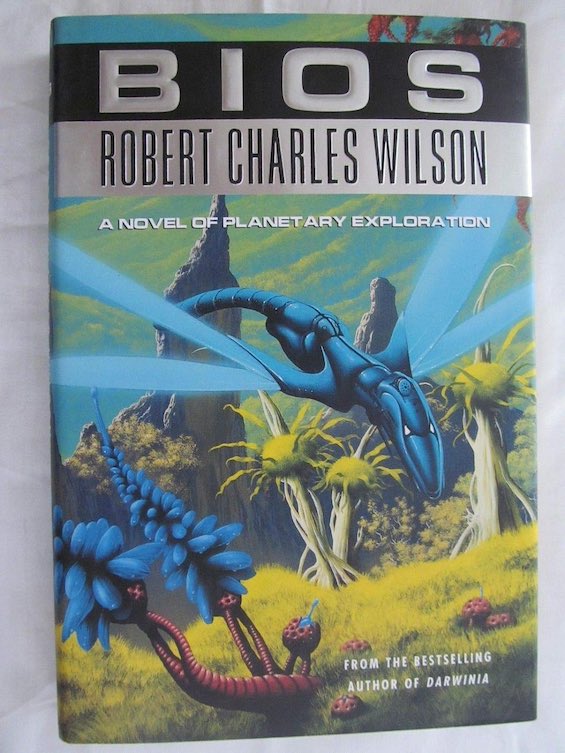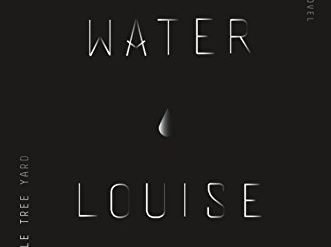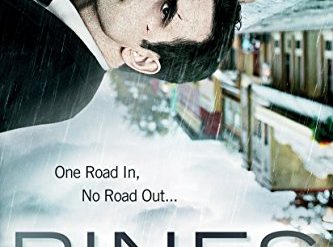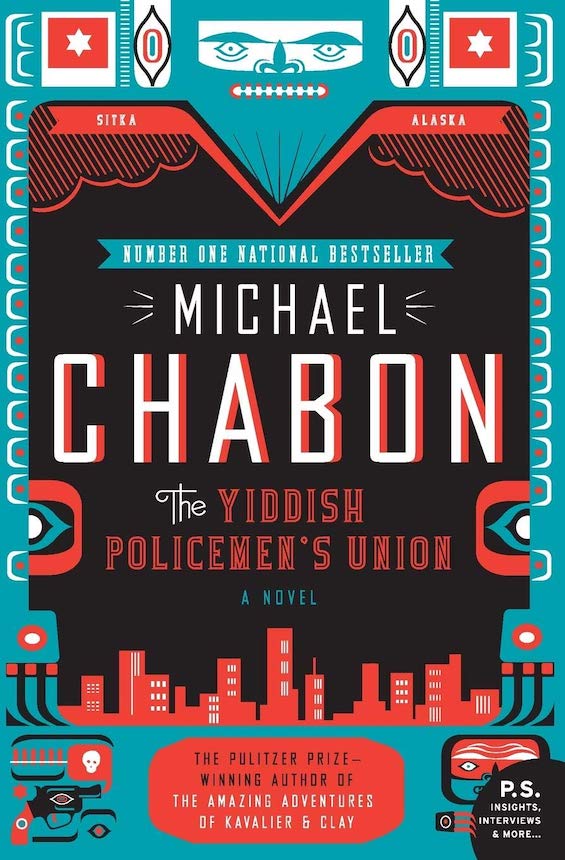
So, you think you know a little Yiddish? Well, unless you speak the language, you’ll learn a lot of it from Michael Chabon’s award-winning speculative novel, The Yiddish Policemen’s Union. Maybe you already know words like ganef (thief), macher (big shot), and shlemiel (sad sack or loser). But how about shammes? That’s a slang word for cop. A sholem is slang for handgun. And shtarker means strongman, or, in the vernacular, gangster. And there’s lots more. Just take a look at the six-page glossary at the conclusion of the novel. But you’ll have more fun if you simply read this beautifully written story.
Estimated reading time: 5 minutes
A fanciful alternate history
So, why all the Yiddish? Because this is mostly a novel about Jewish cops, Jewish mobsters, and the Messiah. But it’s also about the Indians of southeast Alaska, the Tlingit. And there are a few WASPs thrown into the mix as well. They all converge in and around the metropolis of Sitka, Alaska, which has gained a Jewish population of 2.3 million in this fanciful alternate history. But that’s another story. A long one. And such a story it is!
The Yiddish Policemen’s Union by Michael Chabon (2007) 468 pages ★★★★☆
Winner of the Hugo and Nebula Awards for Best Novel

Such a story!
So, here’s the scoop. “Meyer Landsman is the most decorated shammes in the District of Sitka.” But he’s a mess, mourning his divorce from Bina Gelbfish, his wife of eighteen years, and the death of his beloved sister, Naomi, who crashed her Piper Super Cub into a mountainside. Landsman has been living, or rather existing, for the past nine months in a dilapidated residential hotel called the Zamenhof. He’s also drinking a lot. One night the manager wakes him up with the news that one of his fellow residents has died. The body belongs to an older man who appears to have committed suicide. But Landsman isn’t convinced. And he’s deeply puzzled by the lack of any identification or any leads to the man’s identity. This puzzle will take weeks of investigation to unravel. And by the time Landsman solves it, all hell is breaking loose. Those Jewish mobsters I’ve alluded to have got something up their sleeve. Oh, and the Messiah gets into the act, too.
A brilliantly plotted thriller
The Yiddish Policemen’s Union is a brilliantly plotted thriller. Chabon’s fevered imagination conjures up diabolical plot twists and measures them out with a sure hand. The story works brilliantly on several levels, as a police procedural, as a journey of discovery, and as speculation about the enduring reality of the Jewish Diaspora. The characters leap off the page, expertly portrayed. My only complaint is that the author’s stylistic pyrotechnics sometimes get in the way, slowing the pace of the action with stream-of-consciousness memories and an overabundance of local color. But the writing is beautiful, and that will have to do.
Is this alternate history?
At first glance, you might characterize this award-winning novel as alternate history, as I’ve done in this review. But it’s not, really. In alternate history, the writer asks a what-if question and answers it with a tale about what might have transpired if a pivotal figure in history had made a different decision or a consequential event had gone differently. The Yiddish Policemen’s Union doesn’t do that.
Superficially, Chabon speculates what might have happened if the Jews had lost the Israeli War of Independence in 1948 and been driven into the sea. But he also posits many other different historical circumstances. Just two million Jews died in the Holocaust. World War II ended in Europe only when the United States dropped an atomic bomb on Berlin. And the United States waged a protracted and bloody war in Cuba. In other words, this book is probably better viewed as representing an alternate reality rather than alternate history. But who’s quibbling? It’s a great story.
About the author

The list of awards Michael Chabon (1963) has won for his writing is, as my grandmother would have said, “as long as an arm and a leg.” His breakthrough book was the novel The Amazing Adventures of Kavalier and Clay, which garnered the Pulitzer Prize for Fiction in 2001. (I read the book shortly after its release and loved it.) Chabon is the author of eight novels, several nonfiction books, and numerous other written works. He holds a bachelor’s degree from the University of Pittsburgh and an MFA from the University of California, Irvine. Chabon lives in Berkeley, California, with his wife, the Israeli-born writer Ayelet Waldman, and their four children.
For related reading
I’ve also reviewed the author’s Telegraph Avenue (A glorious new Michael Chabon novel, set in my neighborhood) and Wonder Boys (A novel of life on campus that seems more like middle school). And you’ll find other good books by my neighbors at Good books by Berkeley authors reviewed on this site.
You might also care to check out More than 30 great books about Jewish topics and Top 10 great popular novels reviewed.
For more good reading, check out:
- 10 best alternate history novels
- The ultimate guide to the all-time best science fiction novels
- 10 top science fiction novels
- Seven new science fiction authors worth reading
- The top 10 dystopian novels
And you can always find my most popular reviews, and the most recent ones, on the Home Page.

